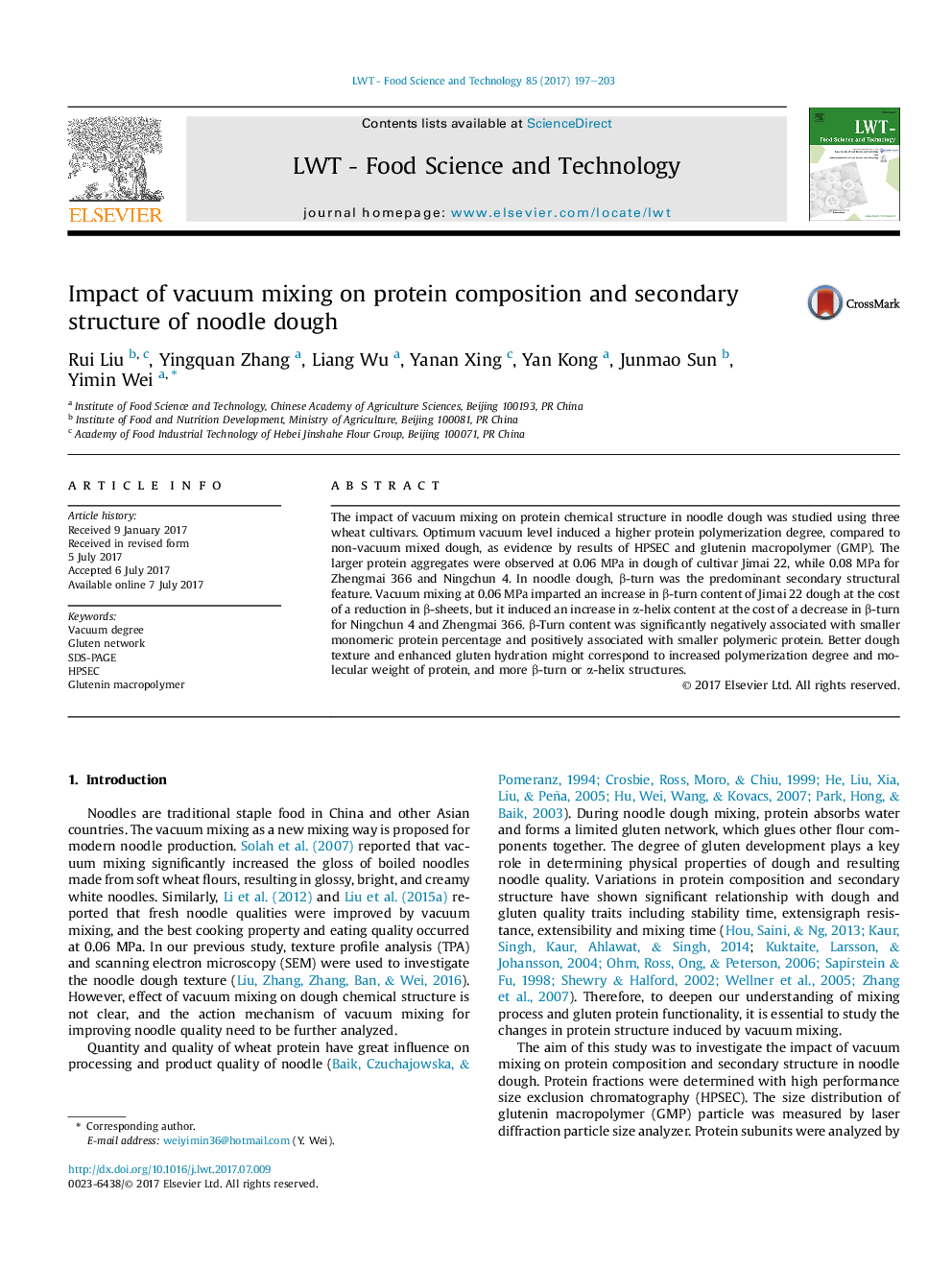| Article ID | Journal | Published Year | Pages | File Type |
|---|---|---|---|---|
| 5768450 | LWT - Food Science and Technology | 2017 | 7 Pages |
â¢Optimum vacuum level induced a higher protein polymerization degree.â¢Better dough texture might correspond to increased protein polymerization degree.â¢Optimum vacuum level induced stronger dough and more β-turn or α-helix structures.â¢Î²-turn was the predominant secondary structural feature in noodle dough.â¢Smaller monomeric protein percentage was negatively associated with β-turn content.
The impact of vacuum mixing on protein chemical structure in noodle dough was studied using three wheat cultivars. Optimum vacuum level induced a higher protein polymerization degree, compared to non-vacuum mixed dough, as evidence by results of HPSEC and glutenin macropolymer (GMP). The larger protein aggregates were observed at 0.06 MPa in dough of cultivar Jimai 22, while 0.08 MPa for Zhengmai 366 and Ningchun 4. In noodle dough, β-turn was the predominant secondary structural feature. Vacuum mixing at 0.06 MPa imparted an increase in β-turn content of Jimai 22 dough at the cost of a reduction in β-sheets, but it induced an increase in α-helix content at the cost of a decrease in β-turn for Ningchun 4 and Zhengmai 366. β-Turn content was significantly negatively associated with smaller monomeric protein percentage and positively associated with smaller polymeric protein. Better dough texture and enhanced gluten hydration might correspond to increased polymerization degree and molecular weight of protein, and more β-turn or α-helix structures.
